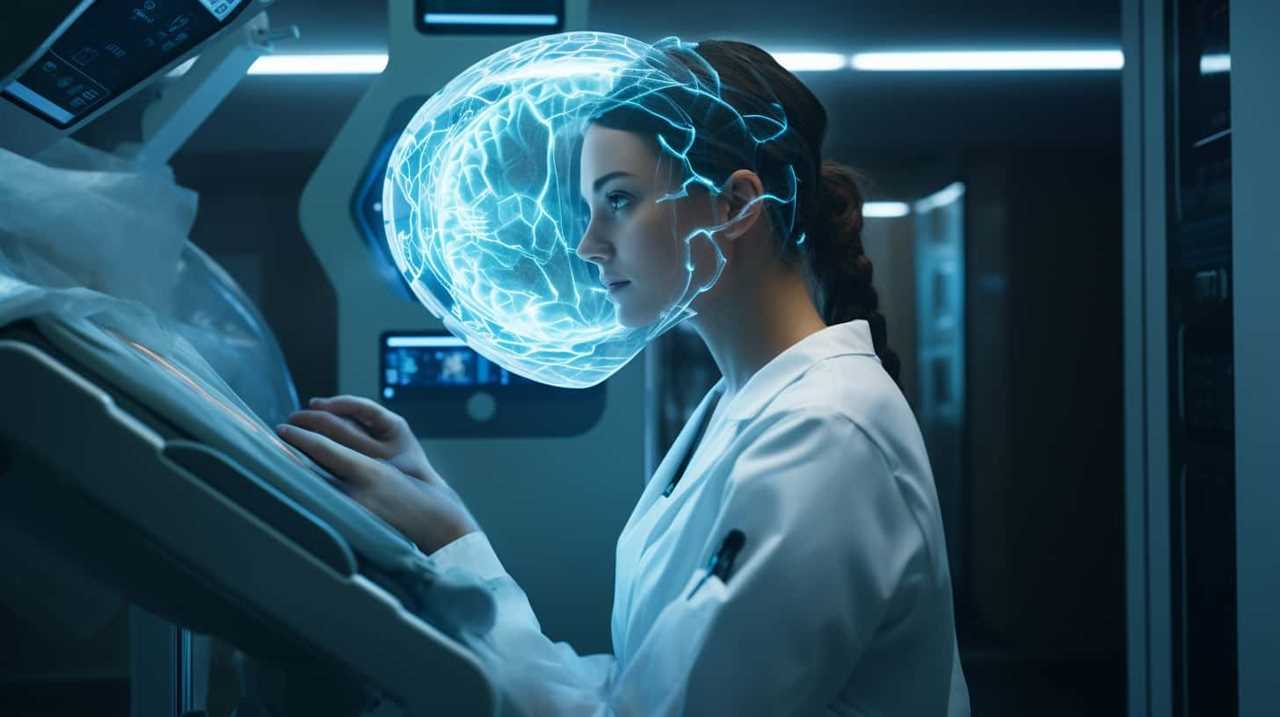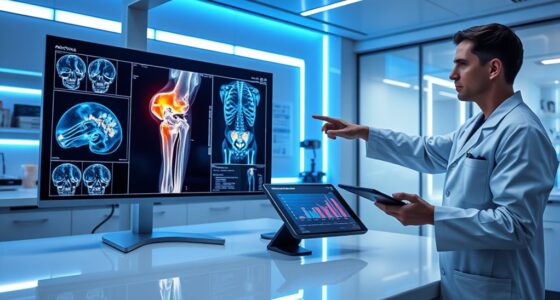This innovative AI tool can detect eye diseases years before traditional methods, giving you a chance for early treatment and better eye health management. It uses advanced algorithms to analyze eye data, helping to prevent vision loss and improve outcomes. By catching issues early, this technology could save millions from irreversible damage. Keep exploring how these breakthroughs are shaping future eye care and the important role AI plays in protecting your sight.
Key Takeaways
- The AI tool detects eye diseases years before traditional methods, enabling earlier intervention.
- Early detection can prevent irreversible vision loss and improve patient outcomes.
- Advanced diagnostic algorithms analyze eye health data to identify early signs of impairment.
- Implementing this AI technology could revolutionize eye care and support widespread screening efforts.
- Ensuring data security and privacy is crucial as AI becomes integral to early diagnosis and treatment planning.

As AI models improve, AI security measures will be essential to ensure patient data remains protected while advancing diagnostic capabilities.
Frequently Asked Questions
How Accurate Is the AI Tool Across Diverse Populations?
You’re likely wondering how accurate the AI tool is across diverse populations. The developers emphasize that they’ve tested the algorithm for population diversity and guarantee fairness, reducing biases. While initial results are promising, ongoing validation across various demographic groups is essential to confirm consistent accuracy. Overall, with careful training and validation, the AI tool aims to provide reliable eye disease detection for everyone, regardless of background.
What Are the Costs Associated With Implementing This AI Technology?
They say “you get what you pay for,” and with this AI technology, the costs involve a thorough cost analysis and infrastructure investment. You’ll need to budget for software licensing, hardware upgrades, and staff training. While initial expenses might seem high, the long-term savings from early detection can outweigh them. Carefully evaluating these costs helps ensure you maximize the benefits of implementing this innovative tool efficiently and sustainably.
Can the AI Diagnose All Types of Eye Diseases?
No, this AI can’t diagnose all eye diseases yet. It mainly detects common conditions like diabetic retinopathy and age-related macular degeneration by analyzing genetic factors and environmental impacts. Some rare or complex diseases require further tests or specialist evaluations. While the AI considerably improves early detection, you’ll still need expert diagnosis for thorough understanding. Continued research aims to expand its capabilities across a broader range of eye conditions.
What Are the Privacy Concerns With Ai-Based Eye Screenings?
You should know that privacy concerns with AI-based eye screenings involve data privacy risks and consent challenges. When your eye images and health data are collected, there’s a chance they could be misused or accessed without your approval. You might also face difficulties giving informed consent, especially if the process isn’t transparent. It’s essential to guarantee proper data privacy measures and clear consent protocols to protect your personal health information.
How Soon Can This Technology Be Widely Available?
You might worry about how soon you’ll access this technology, but it depends on regulatory approval and addressing ethical considerations. Once these hurdles are cleared, widespread availability could happen within a few years, bringing early diagnosis to many. This progress promises quicker, more accurate eye health assessments, so you can stay ahead of potential issues. Rest assured, safety and ethics are top priorities before the technology reaches your local clinic.
Conclusion
Imagine catching glaucoma before it causes any vision loss—that’s now possible with this AI tool. For example, a patient in their 40s was diagnosed early thanks to the technology, preventing decades of potential damage. This breakthrough means millions could preserve their sight longer, avoiding costly treatments or blindness. As you embrace this innovation, you could see a future where early detection saves millions from unnecessary vision loss, transforming eye care worldwide.











